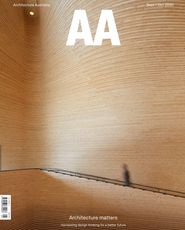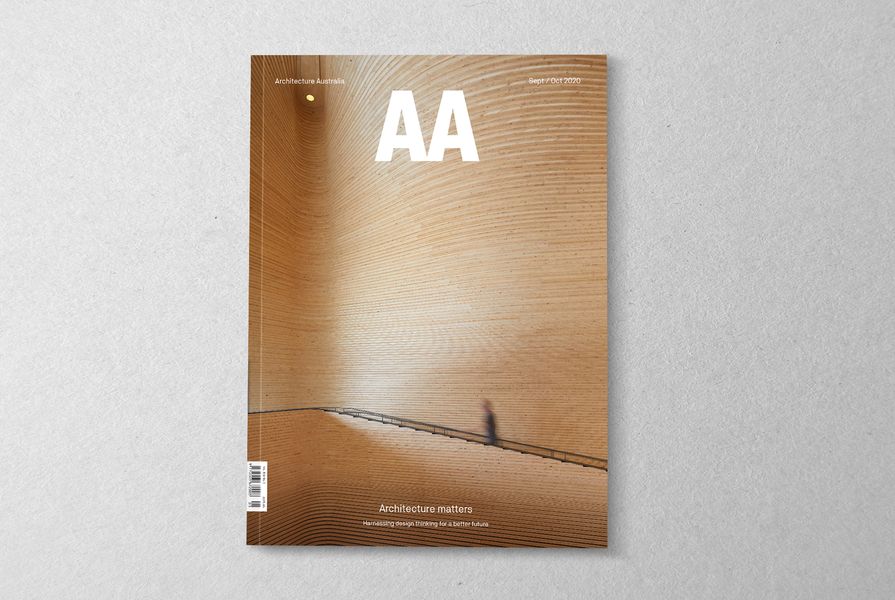We are living at a unique moment in time; in some senses, our lives as we ordinarily inhabit them have been paused by the global pandemic. Within this pause, many of us find ourselves compelled to think deeply about how we have been living, individually and as a society, and to reimagine a more equitable and sustainable future. For architects and designers, who have the tools to address environmental and social challenges, this is a rare opportunity. This issue’s Dossier takes a closer look at the social construct of gender, the inequities it creates, and its evolving relationship to architecture. Guest-edited by Nicole Kalms and Timothy Moore, both members of Monash University’s XYX Lab research group on gender-sensitive design, this collection of essays and case studies explores ways in which we might eliminate spatial inequities by drawing out the various patterns of gender discrimination. According to Moore and Kalms, “the challenge [for architecture] is to interrupt the gendered stereotypes of both material space and the behaviours that take place within it.”
Architects around the world continue to battle the issue of housing inequality, albeit within the constraints of various government policies. The current global pandemic and resulting economic recession has put this inequality under further scrutiny, exposing the flaws in the way that housing is delivered and leaving a greater number of Australians without secure accommodation every day. In his essay on how design has responded to crises in the past, Philip Goad reflects on Australia’s future-proofing against urban slums that developed during the Great Depression. Measures included the formation of government housing commissions with in-house design offices and panels of experts to deliver affordable housing to citizens; today, these commissions have all but disappeared.
The agency of architects to address current housing issues in a post-COVID-19 world is considered in a roundtable discussion with Eloise Atkinson, Malcolm Middleton and Michael Lavery, focusing on Queensland but relevant to Australia more broadly. Middleton argues that “developing more resilient and sustainable cities and communities requires further collaboration between public and private sectors … Non-market housing developments can be seen as a motor of economic revival while providing support for vulnerable community members.”
Echoing Middleton’s sentiments in his review of Kennedy Nolan’s affordable housing project for Housing Choices Australia (HCA) in Melbourne’s Dandenong, Alexis Kalagas argues that, historically, the most impactful multiresidential design is found “where governments, non-profit organizations, architects and community groups are partnering to pilot alternative models or reinvigorate public housing delivery.” HCA’s recent development models one way in which private and public resources can be blended to deliver quality, affordable accommodation for vulnerable groups. Kennedy Nolan is now collaborating with HCA on a Nightingale development in which 20 percent of apartments will be allocated to social tenants.
The Nightingale model itself came out of the need for alternative housing that responds to household diversity, affordability and environmental impact. Five years since the model’s inception, Jacqui Alexander considers its success and the learnings for future developments. Although an expanded affordability agenda is currently being pursued by Nightingale, Alexander suggests “the model proves that architects can play an important role in redesigning the financial structures that support good spatial outcomes.”
In this issue, we also celebrate the Australian Institute of Architects’ Chapter Awards in the lead-up to the National Architecture Awards to be covered in our November/December edition. These awards, which were announced via virtual events in line with COVID-19 restrictions, remain an important platform for peer recognition and professional camaraderie. Our congratulations go to all the practices and people recognized and we look forward to the moment we can celebrate in person.
— Katelin Butler, Editorial Director
Source

Preview
Published online: 31 Aug 2020
Words:
Katelin Butler
Images:
Christopher Frederick Jones,
Derek Swalwell,
Dianna Snape,
Martin Mischkulnig,
Scott Burrows,
Trevor Mein
Issue
Architecture Australia, September 2020





















